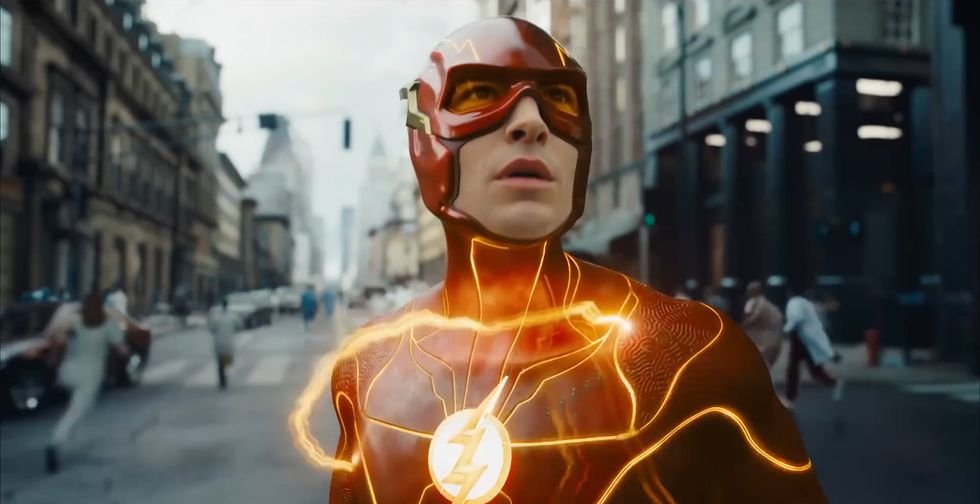How Warner Bros. Pulled Off That Awesome Cameo in the Final Scene of THE FLASH
The Flash is now in theaters, and boy, is it a great superhero movie! It has so many elements of surprise, and such great acting and storytelling, it’s a major feather in DC’s cap. So as we get further away from the film’s release, more info about the making of the movie is rolling out, and it’s a lot of fun to hear. But be warned, as we move forward, we get into major spoiler territory.
Throughout the movie, we got to see several alternate universe versions of the main characters, and one super fun surprise at the end of the film was when Barry had returned to his life, believing everything was back in place, and he got a call from his old friend Bruce Wayne. When he pulls his car around the corner, it’s not Ben Affleck’s Bruce that steps out, but Batman & Robin (1997) star George Clooney’s Bruce Wayne instead! It was a shock to Barry Allen (Ezra Miller), and it was a shock to audiences as well.
A recent report from The Hollywood Reporter reveals that the scene was surprisingly made within just a few weeks after some phone calls, two screenings of the movie, and a half day of shooting in January.
It was also the third ending crafted for the film, which director Andy Muschietti made through three separate regimes at Warners. The Flash serves as a study of a movie that survived and evolved in a rapidly changing media landscape, facing the dictates of several sets of studio heads and a multi-billion dollar acquisition.
The Flash, as it was originally conceived and shot, ended on the courthouse steps with Supergirl, played by Sasha Calle, and Batman, played by Michael Keaton, who was already featured throughout the movie as a returned Batman. It was meant to highlight that Barry did not reset the timeline as he thought he did. It was an ending that was screen tested several times, one that reversed the deaths of Supergirl and Batman earlier in the film.
But through the different phases of leadership at DC, this was changed, and the second iteration was still on the courthouse steps, but now Calle’s Supergirl was joined by Superman, played by Henry Cavill, and Wonder Woman, played by Gal Gadot. Keaton also remained.
Cavill was going to cameo in DC movie Black Adam and was being teed up to return to the role in a brand new Superman movie. Supergirl was retained because even though the executives were killing the development of a standalone Supergirl movie, they were open to her returning in some form and didn’t want the last image audiences saw of her to be her death. Meanwhile, the studio was developing a third installment of Wonder Woman with filmmaker Patty Jenkins and star Gadot. This was a nice way to keep Wonder Woman in the cultural conversation. This ending was shot in September involving Miller, Cavill and Gadot as well as Keaton and Calle.
Then came the takeover of James Gunn and Peter Safran as the new DC heads, who saw that having Cavill and Gadot in the new ending was potentially promising something their plans were not going to deliver. One of the first actions the duo took was to scrap the Cavill Superman film, and they parted ways with Jenkins, effectively killing the third Wonder Woman installment.
The filmmakers, according to multiple people associated with the movie, then looked for alternatives but wanted to keep the germ of the idea: Barry Allen thinks all is right, but then has the rug pulled out at the last moment. They also went back to an idea joked about earlier in the filmmaking process: “How many Batmen can we get?” Clooney was brought up as a long-shot, but Gunn and Safran jumped on the notion.
The pitch, as well as the rough cut of the film, were sent to Clooney, and the rest is history. I love that the studio was able to keep this fun cameo a surprise for the fans. It was a really great way to end the movie.

